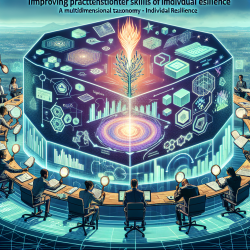Understanding the Multidimensional Taxonomy of Individual Resilience
The Multidimensional Taxonomy of Individual Resilience (MTIR) offers a comprehensive framework for understanding resilience, particularly in the context of children facing adversity. As practitioners in the field of speech language pathology, it is crucial to integrate such frameworks into our practice to enhance outcomes for children. This blog explores the MTIR and how it can be applied to improve practitioner skills.
The Core Components of MTIR
The MTIR divides resilience into two primary branches: manifested resilience and generative resilience. Manifested resilience refers to observable success in adapting to challenges, while generative resilience involves the processes and resources that facilitate adaptation. Understanding these components allows practitioners to better identify and support resilience in children.
Manifested Resilience
Manifested resilience is characterized by developmental competence, psychological health, and character. Each of these subdomains provides a different lens through which resilience can be observed and measured. For instance, developmental competence includes the acquisition of skills and milestones, while psychological health encompasses both the absence of distress and the presence of well-being.
Generative Resilience
Generative resilience is about the assets and actions that individuals use to navigate adversity. This includes multisystemic assets like family support and community resources, as well as individual actions such as coping strategies and meaning-making. Understanding these elements helps practitioners support children in building resilience through their environment and personal agency.
Application in Practice
For practitioners, applying the MTIR means recognizing the dynamic and multisystemic nature of resilience. By identifying both manifested and generative resilience in children, practitioners can tailor interventions to address specific needs. This approach not only supports children in overcoming adversity but also promotes long-term positive outcomes.
Encouraging Further Research
The MTIR provides a framework for further research into resilience, encouraging practitioners to explore how different factors interact to influence resilience. By engaging with ongoing research, practitioners can stay informed about the latest developments and integrate new insights into their practice.
To read the original research paper, please follow this link: The Multidimensional Taxonomy of Individual Resilience.










